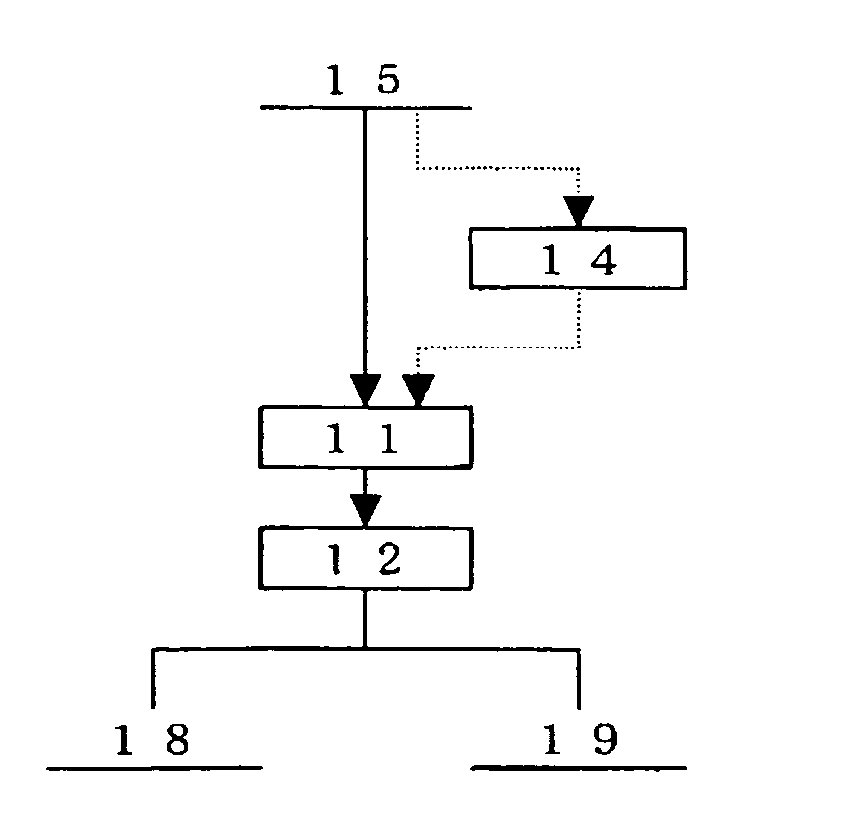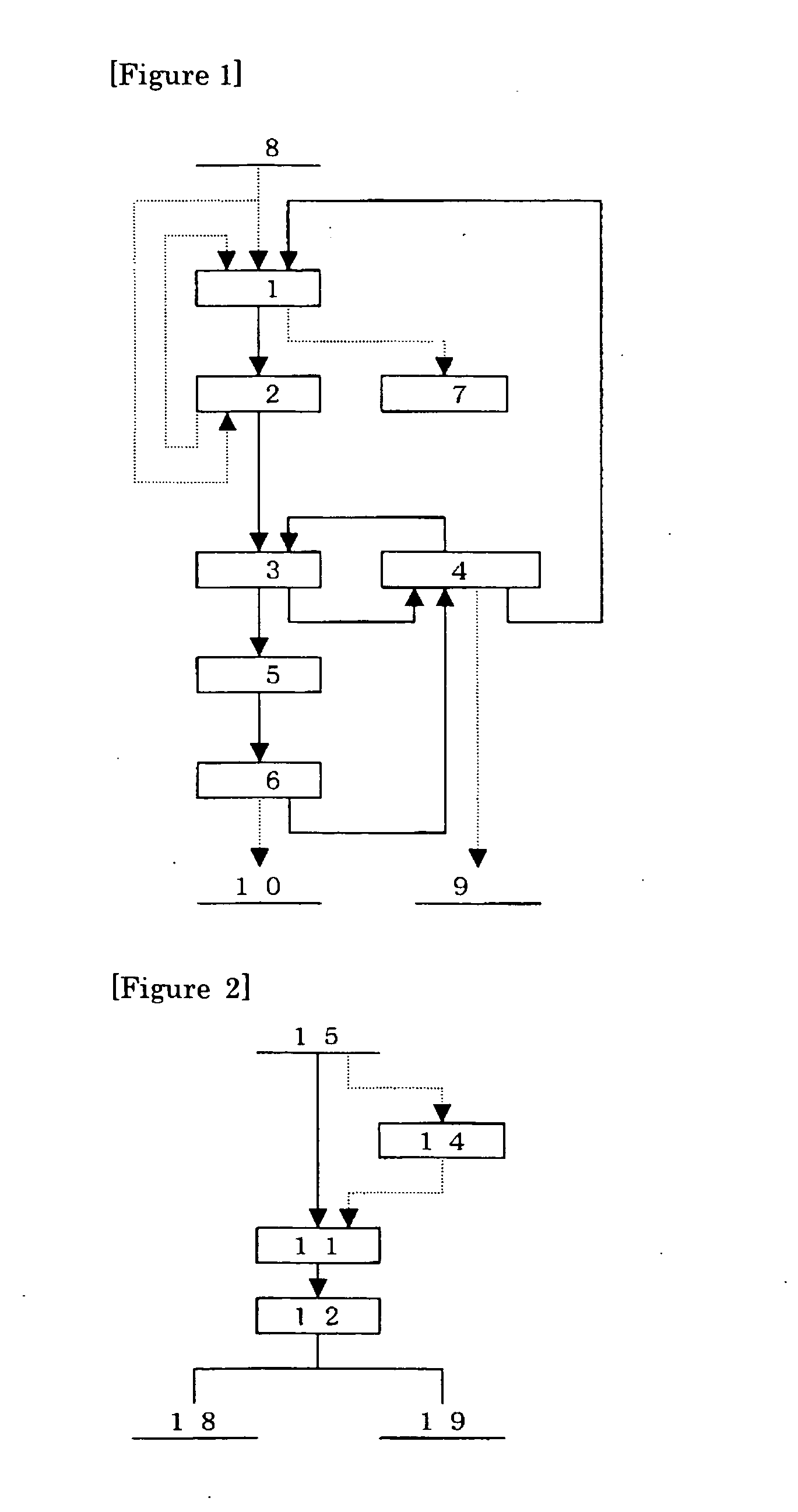Method for concentrating precious metals contained in leaching residue discharged from copper hydrometallurgical process
- Summary
- Abstract
- Description
- Claims
- Application Information
AI Technical Summary
Benefits of technology
Problems solved by technology
Method used
Image
Examples
example 1
[0118] The leaching residue, obtained by chlorine leaching of a copper concentrate, was treated by the pyrolysis, re-leaching and sulfur distillation steps, to evaluate concentration of gold in each product.
[0119] First, the leaching residue was prepared by chlorine leaching of a copper concentrate. A 500 mL reactor of titanium was charged with 30 g of the copper concentrate (refer to Table 10 for its chemical composition) and 300 mL of an acidic, chloride-based leaching solution (copper concentration: 60 g / L, chloride ion concentration: 200 g / L), and put in an oil bath to keep the slurry at 105 to 110° C., into which a chlorine gas was blown for 3 hours for leaching at a constant oxidation-reduction potential of 520 mV (determined using a silver / silver chloride reference electrode). Then, the slurry was separated by filtration into the leaching residue and leaching liquor. The residue weighed 15 g. It was analyzed for the chemical composition. The results are given in Table 10.
[0...
example 2
[0124] The leaching residue, obtained by chlorine leaching of a copper concentrate, was treated by the pyrolysis, magnetic separation, re-leaching and sulfur distillation steps, to evaluate concentration of gold in each product.
[0125] First, the leaching residue was prepared by chlorine leaching of a copper concentrate. A 500 mL reactor of titanium was charged with 30 g of the copper concentrate (refer to Table 11 for its chemical composition) and 300 mL of an acidic, chloride-based leaching solution (copper concentration: 60 g / L, chloride ion concentration: 200 g / L), and put in an oil bath to keep the slurry at 105 to 110° C., into which a chlorine gas was blown for 3 hours for leaching at a constant oxidation-reduction potential of 520 mV (determined using a silver / silver chloride reference electrode). Then, the slurry was separated by filtration into the leaching residue and leaching liquor. The residue weighed 15 g. It was analyzed for the chemical composition. The results are ...
PUM
| Property | Measurement | Unit |
|---|---|---|
| Temperature | aaaaa | aaaaa |
| Temperature | aaaaa | aaaaa |
| Temperature | aaaaa | aaaaa |
Abstract
Description
Claims
Application Information
 Login to View More
Login to View More - R&D
- Intellectual Property
- Life Sciences
- Materials
- Tech Scout
- Unparalleled Data Quality
- Higher Quality Content
- 60% Fewer Hallucinations
Browse by: Latest US Patents, China's latest patents, Technical Efficacy Thesaurus, Application Domain, Technology Topic, Popular Technical Reports.
© 2025 PatSnap. All rights reserved.Legal|Privacy policy|Modern Slavery Act Transparency Statement|Sitemap|About US| Contact US: help@patsnap.com



